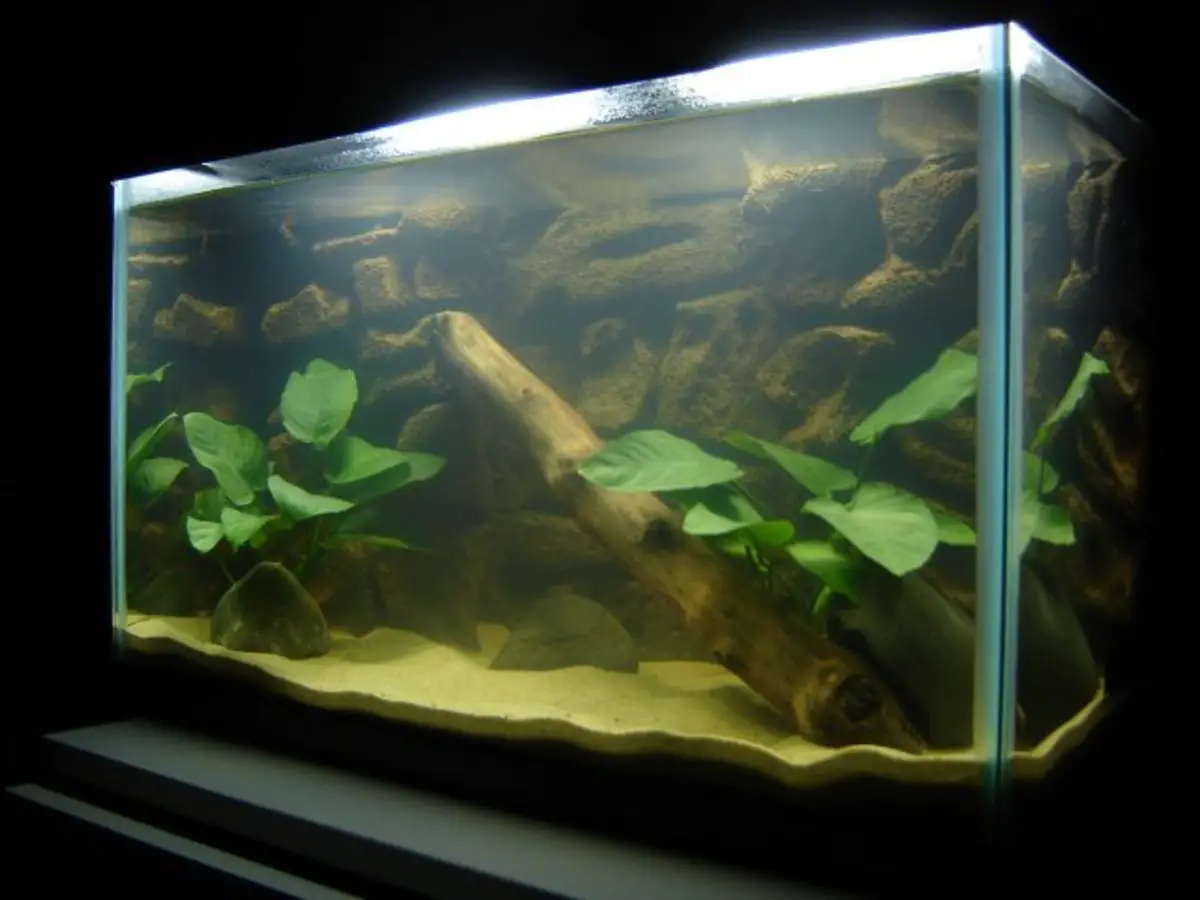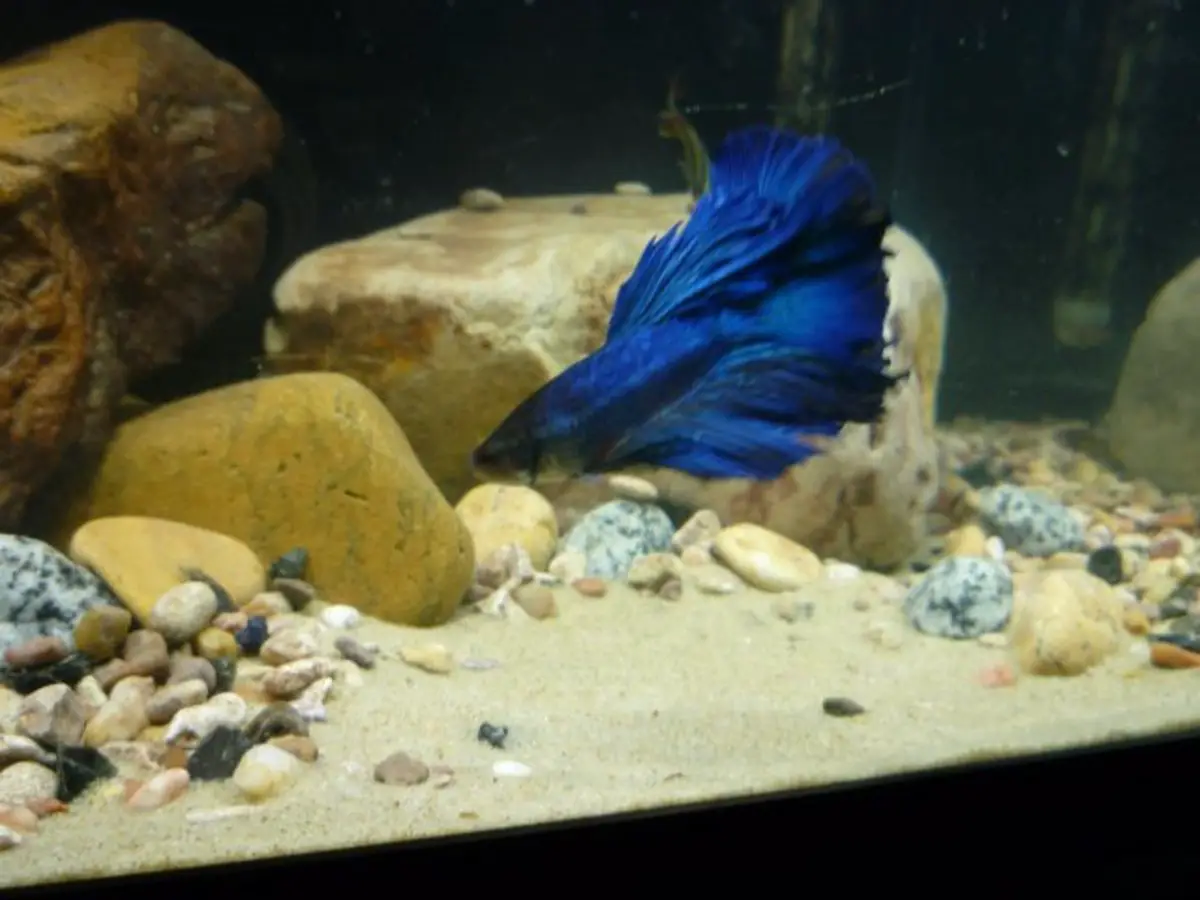Originally posted on May 11, 2023 @ 11:00 am
Last Updated on 6 months by admin
Are you considering using play sand in your aquarium? While it may seem like an affordable and easy option, there are some important pros and cons to consider before making the switch. In this article, we’ll explore the benefits and drawbacks of using play sand as a substrate for your aquarium, so you can make an informed decision for your aquatic pets.
Play sand can be a cost-effective and visually appealing substrate for your aquarium. However, it can also have some drawbacks. Pros include its low cost and availability, as well as its natural appearance. Cons include the risk of compaction, difficulty in cleaning, and potential for harmful bacteria growth. Additionally, it may not be suitable for all types of aquariums or aquatic life. Consider your specific needs and research carefully before choosing play sand as your aquarium substrate.

Using Play Sand in Your Aquarium: Pros and Cons
Aquarium sand is an essential element for any aquarium as it provides a natural and comfortable environment for the aquatic creatures. When choosing the right sand for your aquarium, you may come across different types of sand. One such option is play sand. Play sand is a type of sand that is commonly used in children’s sandboxes but is also suitable for aquariums. However, before you decide to use play sand in your aquarium, it is essential to know its pros and cons.
Pros of Using Play Sand in Your Aquarium
1. Cost-effective: Play sand is an affordable option when compared to other types of aquarium sand available in the market. It is readily available in most hardware stores, making it an easy and convenient option for aquarium enthusiasts on a budget.
2. Natural look: Play sand has a natural beige or tan color, which gives the aquarium a natural look. It also complements the colors of aquatic plants and fish, making them stand out more.
3. Easy to clean: Play sand is easy to clean and maintain. You can easily remove debris and uneaten food from the sand using a siphon or aquarium vacuum cleaner.
4. Safe for aquatic life: Play sand is non-toxic and safe for aquatic life. It does not contain any harmful chemicals that can harm your fish or other aquatic creatures in the aquarium.
5. Good for burrowing fish: Play sand is ideal for fish that love to burrow. The soft texture of the sand makes it easy for fish to dig and create hiding places.
Cons of Using Play Sand in Your Aquarium
1. Dusty: Play sand can be dusty, especially when you first add it to the aquarium. It can cloud the water, making it difficult to see the fish and other creatures in the aquarium. However, this can be resolved by rinsing the sand thoroughly before adding it to the aquarium.
2. Not uniform in size: The grains of play sand are not uniform in size, which can make it difficult for plants to root. It can also make it challenging to create a level surface in the aquarium, which can be problematic for fish that prefer a flat surface.
3. Can alter pH levels: Play sand can alter the pH levels in the aquarium. It can increase the pH levels, which can be harmful to some fish species. It is recommended to test the water regularly and monitor the pH levels if you are using play sand in your aquarium.
4. Can lead to compaction: Play sand can lead to compaction over time, which can make it difficult for plants to grow and root. This can also make it challenging for fish to move around the aquarium.
Conclusion
Overall, play sand is a cost-effective and natural option for aquarium enthusiasts. However, it is essential to weigh the pros and cons before deciding to use it in your aquarium. If you decide to use play sand, make sure to rinse it thoroughly, monitor the pH levels, and maintain it regularly to ensure a healthy and comfortable environment for your aquatic creatures.
Freequently Asked Questions
Using Play Sand in Your Aquarium: Pros and Cons
What is play sand and why is it used in aquariums?
Play sand is a type of sand that is commonly used in children’s sandboxes and playgrounds. It is made up of finely ground quartz crystals and is free of any harmful chemicals or dyes. Play sand is sometimes used in aquariums as a substrate for plants or as a decorative element.
However, there are some potential downsides to using play sand in your aquarium. Play sand is not typically designed for use in aquatic environments, so it may contain impurities or other substances that could be harmful to your fish or other aquatic life. Additionally, because play sand is not specifically designed for use in aquariums, it may not provide the same level of filtration or water quality as other types of substrates.
What are the benefits of using play sand in an aquarium?
One of the main benefits of using play sand in your aquarium is that it is generally inexpensive and widely available. Play sand is also easy to clean and maintain, as it can be easily vacuumed or siphoned to remove debris and waste. Additionally, play sand can provide a natural-looking substrate that can enhance the overall aesthetic of your aquarium.
However, it is important to note that play sand may not be the best choice for all aquariums. If you have sensitive or delicate fish or other aquatic life, it may be better to choose a substrate that is specifically designed for use in aquatic environments and that provides enhanced filtration and water quality.
How do I prepare play sand for use in my aquarium?
Before you add play sand to your aquarium, it is important to thoroughly clean and rinse it to remove any impurities or debris. Begin by rinsing the sand in a bucket or other container, using clean water to remove any dust or dirt. You may need to repeat this process several times, depending on the amount of sand you are using.
Once the sand has been rinsed, you can add it to your aquarium. Be sure to spread the sand evenly across the bottom of the tank, and avoid creating any uneven areas or pockets where waste or debris could accumulate.
Are there any risks associated with using play sand in an aquarium?
While play sand is generally safe for use in aquariums, there are some potential risks associated with using this type of substrate. For example, if the sand is not properly cleaned and rinsed before use, it may contain harmful bacteria or other contaminants that could harm your fish or other aquatic life.
Additionally, because play sand is not specifically designed for use in aquariums, it may not provide the same level of filtration or water quality as other types of substrates. This could potentially lead to poor water quality or other issues if the sand is not properly maintained and cleaned.
What are some alternatives to using play sand in an aquarium?
If you are looking for an alternative to play sand for your aquarium, there are several options available. Some popular substrates for aquariums include gravel, sand specifically designed for use in aquatic environments, and natural materials such as rocks or driftwood.
When choosing a substrate for your aquarium, it is important to consider factors such as water quality, filtration, and the needs of your fish or other aquatic life. Be sure to research different types of substrates and choose one that is appropriate for your specific aquarium setup.

Is This Aquarium Substrate Worth It? Using Play Sand In A Fish Tank
In conclusion, using play sand in your aquarium can have its pros and cons. On the one hand, play sand is a cost-effective option that can add a natural look to your aquarium. It also allows for easy cleaning and maintenance. On the other hand, play sand can release harmful chemicals into the water and may cause issues with filtration systems.
Before deciding to use play sand in your aquarium, it is important to weigh the pros and cons and make an informed decision. Conduct research on the type of play sand you plan to use and its potential effects on your aquatic life. Additionally, consult with experienced aquarium owners or professionals for their advice and recommendations.
In the end, the decision to use play sand in your aquarium should be based on the health and safety of your aquatic life. With proper research and precautions, you can create a beautiful and healthy environment for your fish to thrive in.
